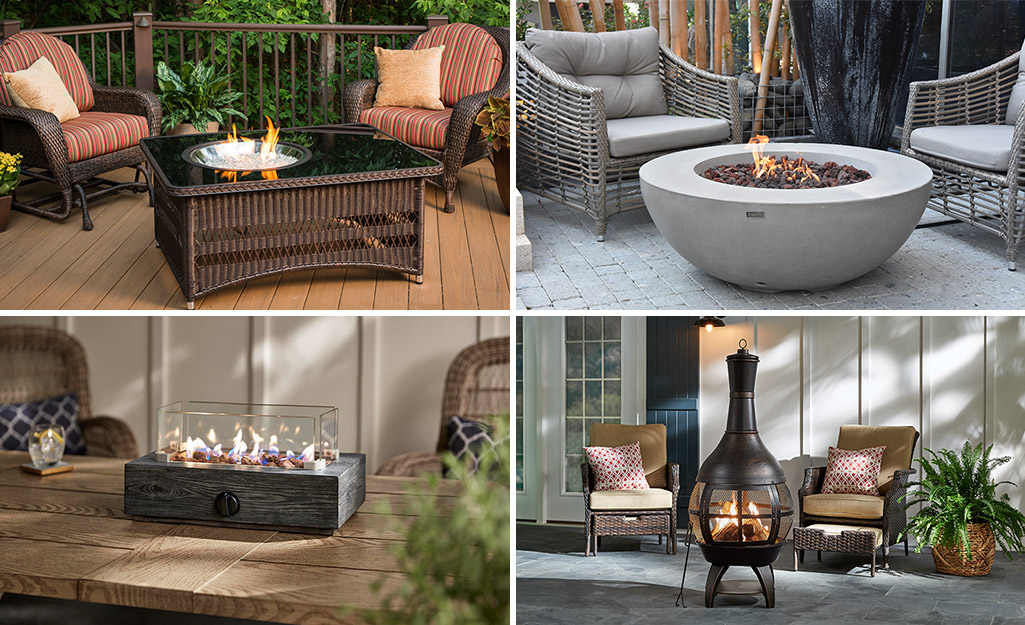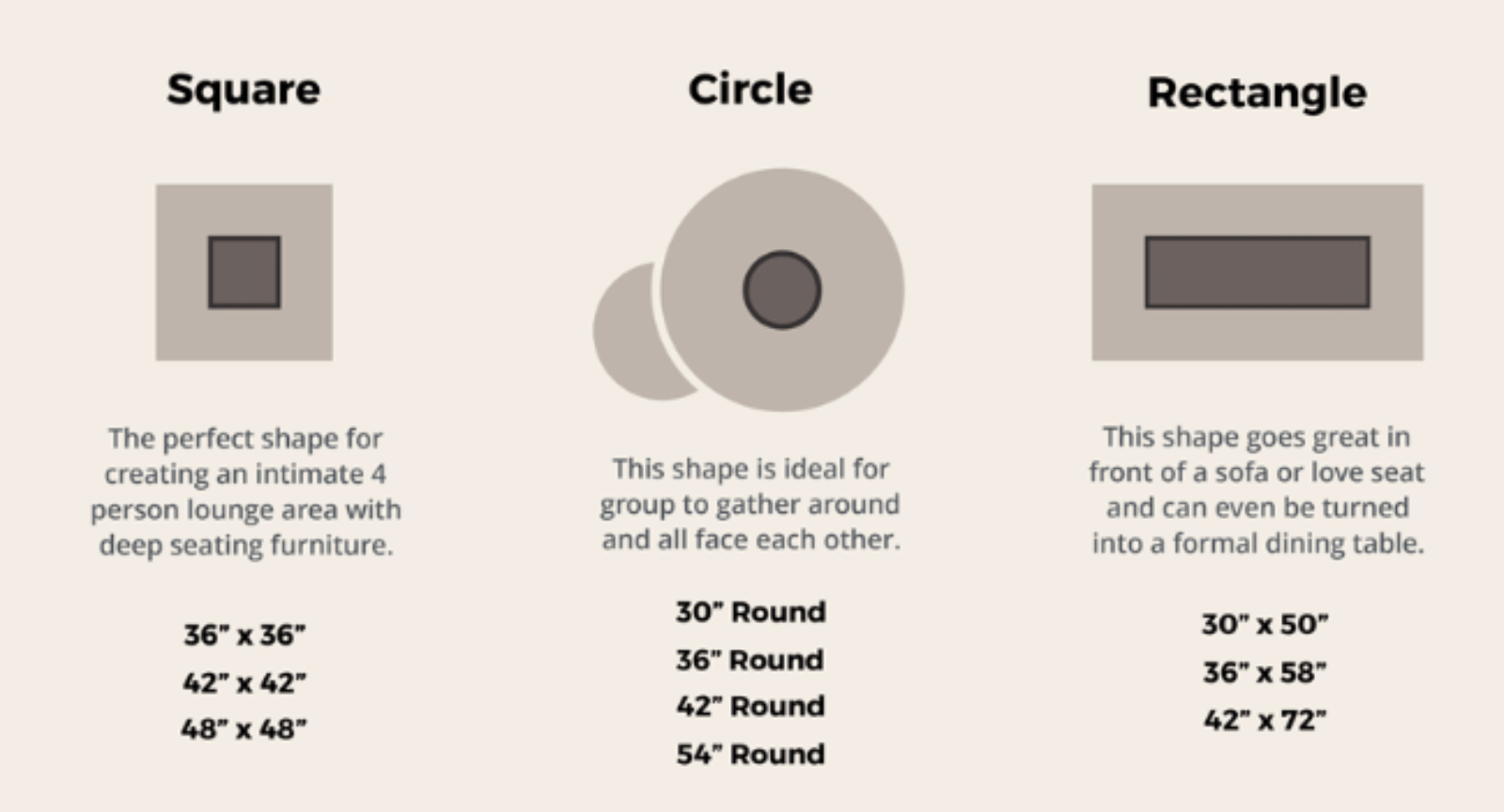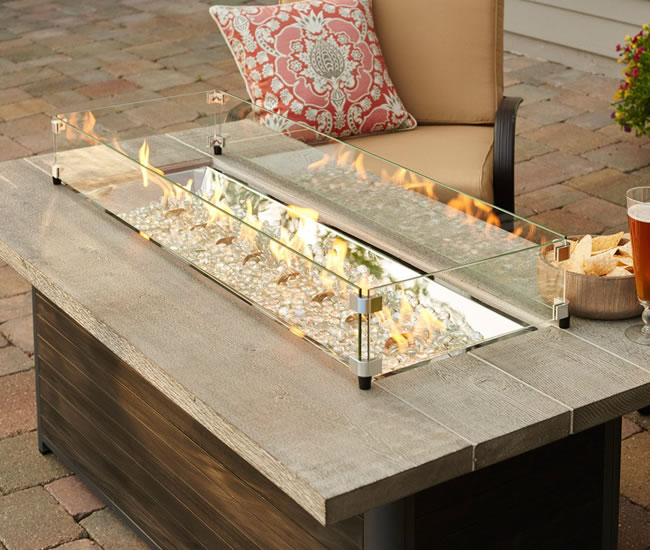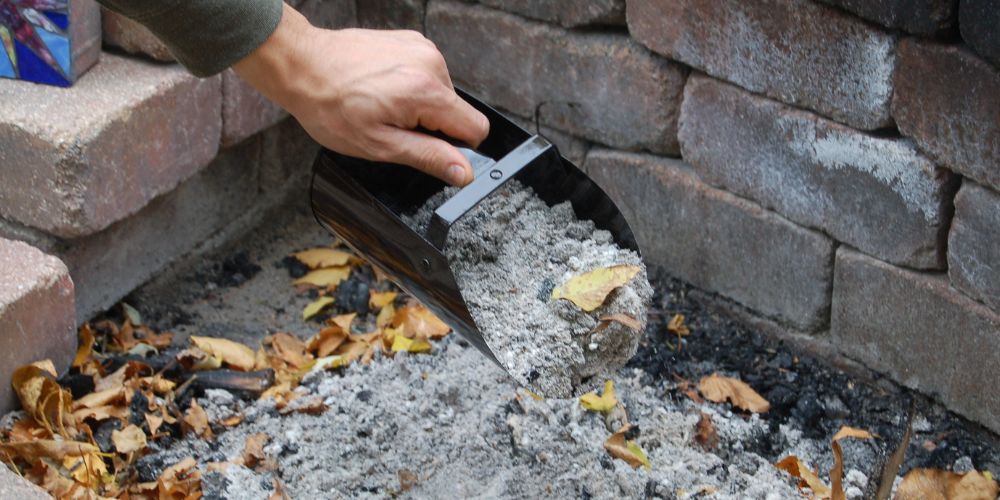Call us at 725-239-9966!
M-F: 8 AM-7 PM PST
Call us at 725-239-9966!
M-F: 8 AM-7 PM PST

An outdoor fire pit is a great way to extend the enjoyment of your outdoor space well into the evening hours. Gathering around a crackling fire under the stars creates an inviting ambiance while providing warmth on cooler nights.
With so many fire pit options on the market, it can be overwhelming to decide which style, size, and fuel type is right for your needs. This comprehensive buyer’s guide breaks down the key factors to consider when shopping for the perfect fire pit.

Fire pits come in three main configurations – fire bowls, fire tables, and fire urns. Determining how you want to use your fire feature is an important first step in selecting the right option.
Freestanding fire bowls have open tops and sit directly on the ground or a base. Available in a range of round and square sizes, fire bowls can suit smaller backyards and intimate gatherings or anchor larger seating areas.
The simplistic styling of steel, stone, and concrete bowls blends well with a variety of decors. For added visual interest, propane models allow you to fill the fire bowl with fire glass or lava rock.
Fire bowls offer flexibility in placement and most are portable if you want to change locations. Smaller-sized wood-burning models can even be taken camping. On the downside, freestanding bowls lack a surface area for holding drinks and plates.
Integrating the conveniences of a table into a fire pit, fire tables have a burner in the center surrounded by an upper surface. Rectangular shapes work well for seating multiple people while square-shaped fire tables are ideal for tighter configurations.
Look for solid tabletop materials like slate, limestone, or concrete that can withstand heat. Other fire table options have tile, stone, or glass tile insets that allow the flames to shine through for a mesmerizing effect. Most fire tables operate on convenient gas fuel requiring no wood or cleanup.
The main advantage of fire tables is having a built-in space for dining and drinks right next to the fire. The tradeoff is fire tables take up more room than a basic fire bowl or urn.
Resembling classic Roman colonnades, an outdoor fire urn consists of a burner housed in a tall covered urn, usually over three feet high. The elongated shape shoots flames upward while the cover contains sparks, making fire urns a good choice when safety is a top concern.
From an aesthetic standpoint, the stately silhouette of copper, hammered metal or fiber clay urns complements formal backyard designs and garden landscapes. For portable warmth, some models accommodate hidden propane tanks while larger permanent urns operate off natural gas lines.
On the downside, the narrow shape of fire urns only allows seating for a couple of people. The hot surface of the urn body can also pose a safety risk for kids and pets. Weigh these factors when deciding if a stylized fire urn is the right option.
Weigh the pros and cons of each fire vessel configuration:
| Style | Pros | Cons |
|---|---|---|
| Fire Bowl | Freestanding versatility | No tabletop space |
| Fire Table | Built-in table area | Less portable |
| Fire Urn | Stylized appearance | Limited seating |

The material composition of your outdoor fire pit determines durability, maintenance needs, safety factors, and price range. Compare the advantages of common fire pit building materials:
Known for its strength, steel is one of the most popular choice for a metal fire pit and is available in a range of types:
While thin steel may dent, high-quality steel fire vessels maintain their structural integrity through seasons of regular fire pit use. Another plus is steel’s high heat conductivity – expect plenty of warmth emanating from a steel fire feature.
Known for retaining and conducting heat efficiently, heavy cast iron makes a wonderful material for wood-fueled fire pits. Beautiful and durable, cast iron develops a protective patina finish with consistent use.
Keep in mind that cast iron fire bowls tend to run smaller in diameter due to their weight. You’ll also need to take precautions to prevent rust on fire pits installed outdoors.
Quarried from the earth, natural stone has uniquely beautiful striations and color mottling that varies from piece to piece. Granite, limestone, and marble stone fire pits bring a refined elegance to patio seating groups.
Cared for properly, natural stone fire vessels can serve you well for over a decade. The initial investment runs higher than metal options but the stone’s durability justifies the cost long-term. One note is that built-in stone fire pits and tables often require professional installation.
A budget-friendly fire vessel option, precast concrete boasts extreme durability and weather resistance. Concrete maintains structural integrity when heated and the neutral tone blends into most backyard styles.
With concrete creativity comes in shape options. Many manufacturers offer custom molds for one-of-a-kind concrete fire bowls, tables, and columns limited only by the imagination.
On the downside, mass-produced concrete fire vessels tend to offer fewer decorative styling choices than steel or stone. Also, you have to put non-combustible material beneath the fire pit on the concrete.

Finding the perfect size for a fire pit is crucial to avoid issues later on. You have to ensure the fire pit fits comfortably within your available backyard. First, determine the rough size of the area you want to heat, then cross-reference your size limitations. Consider these general size guidelines:
Ranging from 22 to 36 inches in diameter, these fire pits sufficiently warm seating areas measuring 6 feet across. Compact fire bowls work well placed near pathways, gardens, and limited spaces. Tailor these fire pits to solo relaxing or an intimate conversation area for two.
Match dainty-scaled fire vessels with tiny patio furniture like bistro sets. Single-sided fire tables in this size bracket save room in narrow outdoor areas. Small fire options offer affordable pricing and ample portability.
With a diameter spanning 36 to 44 inches, medium-sized fire pits throw heat for 8 to 10 feet which comfortably accommodates standard conversation and dining seating arrangements.
Their generous sizing handles regular backyard fire pit gatherings without overpowering the landscape. Position medium round or square fire pits centrally concerning seating groups. Fire tables work exceptionally well for family meals.
On the spacious end, large fire pits measuring 44 inches across or larger make a dramatic backyard design statement. Impressive wood-fueled statement fire bowls allow for arranging sectional seating 360 degrees around.
Rectangular fire tables spanning 4 feet wide or more provide ample surface area for serving buffet-style spreads to large gatherings. Oversized fire pits require allowing lots of clearance from seating, serving space, and through traffic routes.
For major landscape impact, extra-large fire features 60 inches wide and bigger serve as a central point of focus and orientation for expansive pool decks and even patios. Seating twenty or more people with ease, plus-sized fire bowls work best built into place due to their bulk and weight.
While budgetary reality limits super-sized fire table options, some manufacturers offer custom over-scale fire tables perfect for grand hotel courtyards and reception spaces. Always follow safety codes for required clearances when installing extra-large pit options.
Use this general size guide to identify what fire pit diameter best suits your seating area size:
| Fire Pit Size | Heats Area Span |
|---|---|
| Small (22-36") | Up to 6 feet diameter |
| Medium (36-44“) | 8 to 10 feet diameter |
| Large (44-60") | 10+ feet diameter |
| Extra-large (60"+) | 15+ feet diameter |

Arguably the most critical choice to make when fire pit shopping is deciding between fuel sources. Here we break down the defining features of each fire pit fuel type.
Nothing beats the nostalgic crackling sound, inviting aroma, and roaring flames of a genuine wood-fueled fire. Also, wood-burning fire pits give off most heat and that's too by burning renewable hardwood logs making them an eco-conscious choice.
Ideal for: Those wanting an authentic fire experience with mesmerizing visuals and natural wood smell. Requires having ample outdoor space away from structures/trees and a steady supply of seasoned firewood.
Safety considerations: Wood-burning fire pits produce floating embers, require oxygen to burn safely, and generate a lot of radiant heat. Only operate in non-combustible areas safely away from homes, foliage, and anything flammable. Always have a fire extinguisher, shovel, and water nearby. Ensure proper ventilation to allow heat and gasses to dissipate.
Maintenance: Requires manually loading/stoking wood while avoiding dangerous flare-ups from pine knots or too many logs. Expect to remove fire pit ashes regularly. Inspect for damage routinely and re-stack any shifted bricks or stones.
Cost: The pits themselves range dramatically in pricing depending on materials/masonry but wood as a fuel is very affordable, only necessitating an initial investment in tools.
Propane and natural gas fire pits provide convenience and control over more traditional wood-burning options. Simply adjust a dial or press a button to ignite the flame. Switch it off just as easily—no need to battle glowing embers!
Ideal for: Homeowners wanting a permanent fire pit with push-button start, adjustable heat, and multi-color flames. Natural gas integrates seamlessly into backyards while propane models offer portable convenience.
Safety: Gas options are typically safer than wood, especially on decks/patios. But propane tanks still present a (small) explosion risk. Ensure all lines and valves are in good shape and keep an ABC fire extinguisher nearby.
Maintenance: Gas fire pits mainly just entail wiping down materials to keep them clean and replacing lava rock as it degrades over time. Propane tanks need swapping out eventually while natural gas bills slowly add up.
Cost: Prices run the gamut from a couple of hundred dollars for basic portable propane fire pits to upwards of $5,000-$10,000 for installing a customized natural gas fire function. Operating costs depend on local fuel rates.
Smokeless fire pits offer the ambiance and warmth of flames without all the mess! Smokeless fire pits work by utilizing cans of gel fuel to create an understated flame perfect for gatherings and close seating on balconies or patios. Cleanly burning ethanol fire pits offer high-design features across the portable tabletop and standalone models from contemporary brands.
Ideal for: Homeowners in locations prone to weatherization like coastal areas. Apartment dwellers want a compact, portable flame that's permissible on balconies. Stylish entertaining spaces where guests will be sitting near the fire.
Safety: Smokeless options are typically safer than wood-burning pits, especially regarding air quality and floating embers. However, ethanol fuel is still highly flammable and requires caution around kids/pets. Have a fire extinguisher ready at all times.
Maintenance: Empty fuel cans when finished and wipe down steel surfaces if desired. Refueling costs add up over time but clean up is quick.
Cost: Budget models start around $100 but smokeless fire pits use proprietary fuels that raise long-term ownership costs. Higher-end ethanol tabletop fireplaces easily fetch $1,000+.
For fire pits doubling as grills, charcoal models allow you to safely barbecue while enjoying an open-air fire simultaneously.
Ideal for: People desiring a fire pit with grilling/cooking functionality in one outdoor fixture. Also for those adverse to the smell of propane who prefer all-natural charcoal fuel.
Safety: Follow standard grill/charcoal precautions like avoiding lighter fluid overuse and preventing grease flare-ups. Bank coals fully before leaving to prevent inadvertent fires. Allow ashes to cool completely before removing charcoal remnants and debris in case of latent embers.
Maintenance: Clean grill grates thoroughly after each use with a metal brush and cover when storing. Expect to remove ashes occasionally. Periodically inspect fire brick or steel walls for damage/gaps and fill charcoal as needed.
Cost: Budget charcoal models price similarly to mid-range wood-burning fire pits but offer extra versatility for cooking. High-end custom combo grill/charcoal fire pit combos cost several thousand dollars. Fuel itself remains affordable.

A few handy fire pit accents make all the difference in functionality, ambiance, and safety. Consider incorporating useful amenities like:
Improperly installed fire pits pose serious risks like home explosions or wildfire spreading. You must follow the manufacturer's specifications regarding clearance distances to structures and combustibles. While requirements vary, here are general guidelines for fire pit required distance from homes:
Clearance from buildings
Clearance from seating
Location considerations
Additional safety tips
Fire pit installation is critical but what about ongoing maintenance? Let’s uncover...
Investing a little periodic effort to maintain your fire pit preserves longevity and functionality. Follow this routine adjusting timing as needed:
Every use
Monthly
Annually
As needed
Every 2-3 years

The best time for a fire pit purchase can help maximize your savings. Here are some tips to find the best deals:
Whether you decide on a basic $100 portable fire bowl or a luxury thousand-dollar customized fire table, rest assured you'll find deals that will reduce your fire pit cost.
When looking for a fire pit, there are many options to consider. Fire pits come in various sizes, fuel types, materials, and styles to suit different aesthetics and seating capacities. As you choose the right fire pit for your home, keep in mind important factors like safety clearances and regular maintenance needs.
Also, ensure your fire pit tables come equipped with features like spark screens and heat guards. When it comes to fire pits, knowledge is key for both enjoyment and preventing accidents. Carefully make a fire pit selection suitable for your yard that aligns with local fire codes so everyone can safely gather around a fire pit to connect and make memories.
The amount of BTU rating for your fire pit depends on the size of your outdoor area and your heating needs. A typical range could be from 30,000 to 60,000 BTUs, with higher BTUs producing more heat.
Many fire pits are incredibly easy to install – sometimes it's just a matter of placing the fire pit in place on a level surface. Some models, like gas fire pits may require professional installation. But even with a DIY fire pit kit, you can have a safe and enjoyable fire pit set up in your yard in no time.
While a canopy might seem a tempting accessory, it's typically very dangerous to install a canopy over a fire pit. To ensure your fire pit is safe, make sure that it's not located under any potentially flammable structures like canopies or tree branches.
The lifespan of a fire pit can vary depending on its material, the amount of use, and how well it's maintained. For example, a well-maintained steel fire pit can last for several years. Good maintenance advice includes using a custom cover to protect it against the elements when not in use.
From wood-burning pits, tabletop fire pits, and DIY fire pit kits, to propane and natural gas pits, fire pits are available in many styles and materials. Each type can offer a unique ambiance and experience, and you can use this guide to find the best fire pit for your outdoor space.
Absolutely! Roasting marshmallows on a fire pit is a timeless tradition. However, the type of fire pit you have can affect how well this activity goes. Wood fire pits are incredibly ideal for marshmallow roasting due to the traditional fire they produce.

{"one"=>"Select 2 or 3 items to compare", "other"=>"{{ count }} of 3 items selected"}
Leave a comment